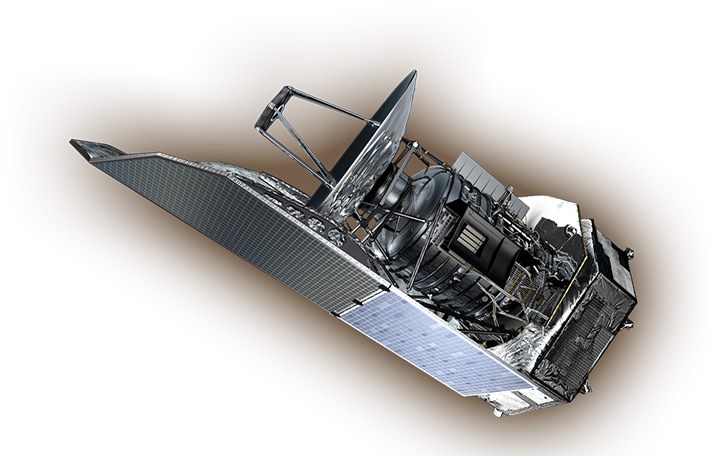
Misty Star in the Sea Serpent
This artist's concept illustrates an icy planet-forming disk around a young star called TW Hydrae, located about 175 light-years away in the Hydra, or Sea Serpent, constellation. Astronomers using the Herschel Space Observatory detected copious amounts of cool water vapor, illustrated in blue, emanating from the star's planet-forming disk of dust and gas. The water vapor, which probably comes from icy grains in the disk, is located in the frigid outer regions of the star system, where comets will take shape.
In our own solar system, comets are thought to have carried water to Earth, creating our oceans. A similar process might be taking place around TW Hydrae -- comets could, over the next several millions of years, transport water to young worlds. The Herschel results demonstrate that vast reservoirs of water are available around stars for creating these hypothetical water worlds.
Herschel is a European Space Agency mission with significant NASA contributions. Launched in 2009, the spacecraft carries science instruments provided by consortia of European institutes. NASA's Herschel Project Office based at JPL contributed mission-enabling technology for two of Herschel's three science instruments. The NASA Herschel Science Center, part of the Infrared Processing and Analysis Center at the California Institute of Technology in Pasadena, supports the U.S. astronomical community. Caltech manages JPL for NASA.
Image Details
- Date
- October 20, 2011
- ID
- nhsc2011-018b
- Type
- Artwork
- Credit
- NASA/JPL-Caltech
Object Details
- Name
- TW Hydrae
- Subject | Milky Way
- Star Circumstellar Material Disk Protoplanetary
- Distance
- Lightyears 150









